5 Useful Tips to Organize Android Notifications
Notifications are great for staying informed, but they can quickly get out of hand. With so many alerts coming from different apps, checking the notification center can feel like wading through a sea of information. Luckily, Android makes it easy to manage the chaos and keep things organized.
1. Mute or turn off notifications for less important apps
There are dozens of apps installed on your phone, but not all of them are equally important. One of the things you can do to tame notifications on your Android phone is to turn off alerts from unnecessary apps. This alone can make a big difference in reducing clutter.
For example, always turn off notifications from shopping apps that constantly send alerts about promotions or deals. Likewise, turn off notifications from regular apps like Candy Crush, which often send updates or reminders every few hours.
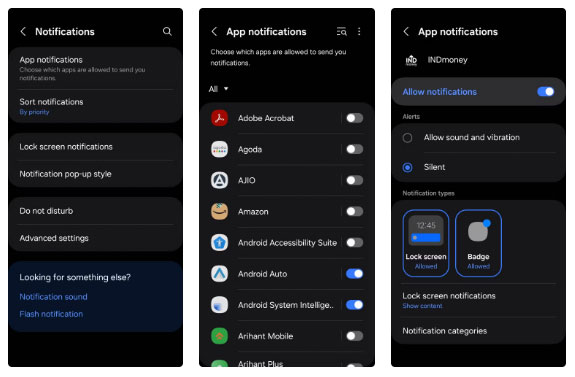
For apps you're not sure about — like news apps — take a subtle approach and mute notifications. That way, you can still get notifications if you choose to check, but without the ringing alarm in your ears.
2. Manage notification categories for key apps
For social media , messaging, and email apps , you won't want to turn off alerts completely, but you'll want more control over what notifications you get. Luckily, Android lets you customize notifications by category, so you can choose what types of notifications you want to receive.
If you rely on WhatsApp to communicate, muting or turning off notifications completely is not practical. Instead, mute group chat notifications, which can be noisy and you don't need to be alerted every time someone messages in a non-urgent chat.
Similarly, for Instagram , keep notifications on for direct messages and calls, but turn off alerts for comments, likes, new followers, and first posts. Do this for all app alerts that aren't urgent enough to require your immediate attention.
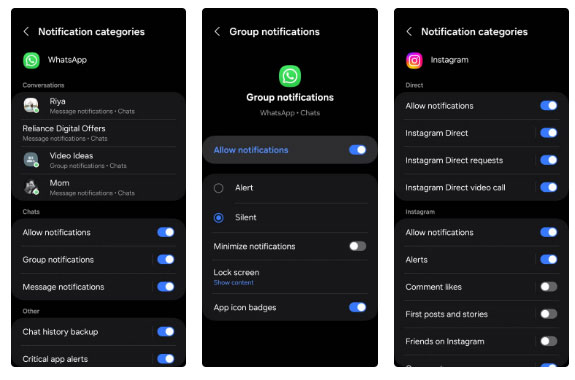
3. Pause critical alerts
Sometimes an alert comes up that you don't want to ignore completely, but you're not ready to deal with right away. That's where Android's snooze feature comes in handy. Instead of feeling pressured to respond immediately or letting it pile up in your notification drawer, you can temporarily ignore it until you're in a better position to deal with it.
When an important alert pops up—whether it's a reminder for a meeting, a message that needs responding to, or a task that needs tackling—tap the snooze icon (a bell with a clock on top), choose a snooze duration from 15 minutes to 2 hours, and tap Save . It's quick, intuitive, and perfect for times when you need to focus on something else.
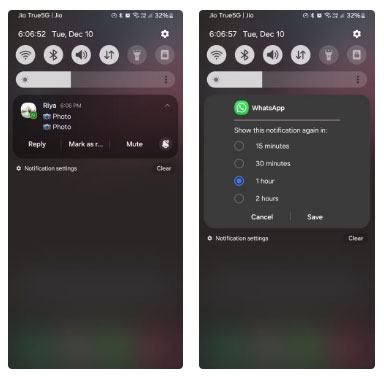
4. Use Do Not Disturb mode
Another way to manage notification overload on Android is to use Do Not Disturb mode. It's a simple but effective way to take back control when your phone is bothering you.
Android's Do Not Disturb settings menu lets you customize the hours, frequency, and conditions under which it activates. For example, you can schedule Do Not Disturb to automatically activate at 10 p.m. every night and last until the next morning. This ensures you get uninterrupted sleep without your phone buzzing with notifications. It's a relief to wind down at night without having to worry about constant alerts.
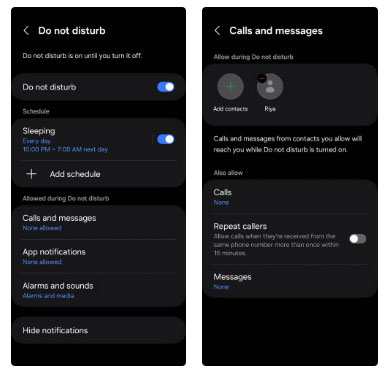
5. Set priority conversations
If you get a lot of text messages and WhatsApp messages throughout the day, your notification center can get a little chaotic at times. That's where Android's ability to prioritize conversations comes in handy.
With priority conversations, you can mark specific contacts or threads to ensure their notifications always appear at the top, no matter what. Additionally, these priority messages open in floating bubbles, making them super easy to spot and respond to immediately. This means that when a message comes in from someone you've marked as priority, it won't get lost in a list of less important notifications.
For example, set messages from family members and activities as priority conversations. This ensures that you don't miss an important message when a person you care about or a colleague gets in touch.
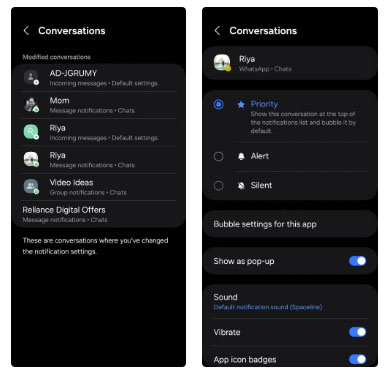
You should read it
- Get all notifications from your Android phone on the Desktop screen
- How to enable Notification Cooldown on Android 16
- 10 ways to fix notification errors are not displayed on Android
- How to customize notification sounds for each app on Android
- How to change the application arrangement style on Android 12
- How to pause and repeat notifications on Android
 Added new improvements to Factory Reset Protection and updated Find My on Android
Added new improvements to Factory Reset Protection and updated Find My on Android How to write Math expressions in Notes on iPhone
How to write Math expressions in Notes on iPhone How to quickly convert units via Live Text iPhone
How to quickly convert units via Live Text iPhone How to turn off back tap notification on iPhone
How to turn off back tap notification on iPhone How to turn off multiple message notifications on iPhone
How to turn off multiple message notifications on iPhone How to use multiple Bluetooth speakers on iPhone at the same time
How to use multiple Bluetooth speakers on iPhone at the same time